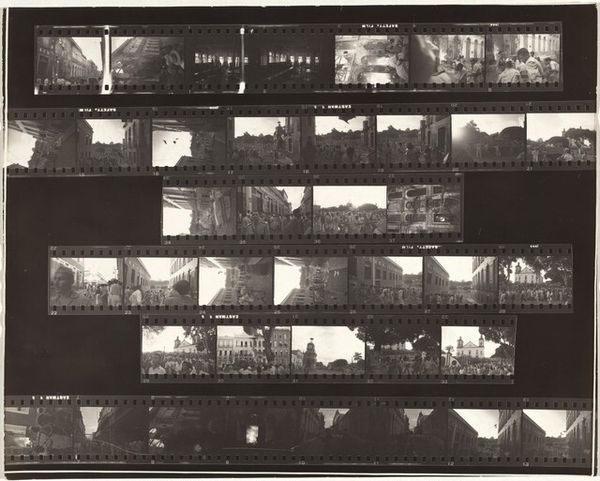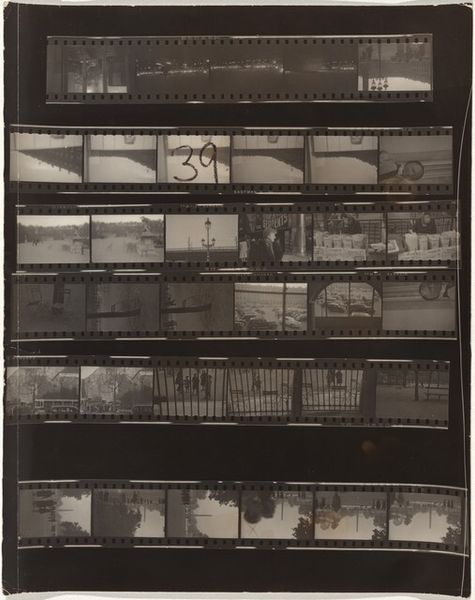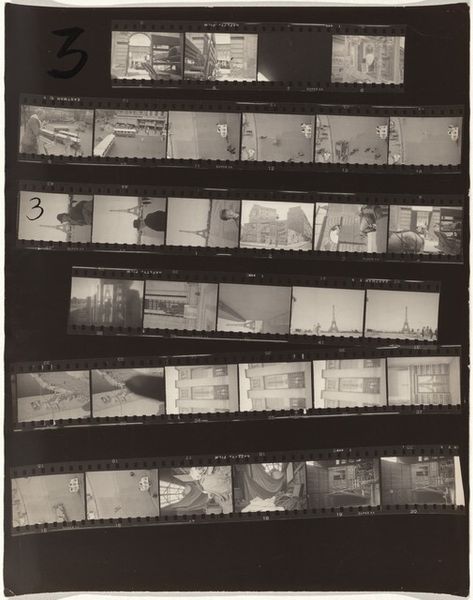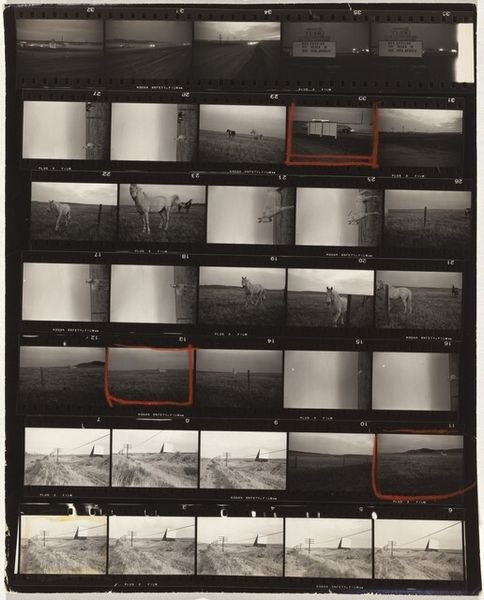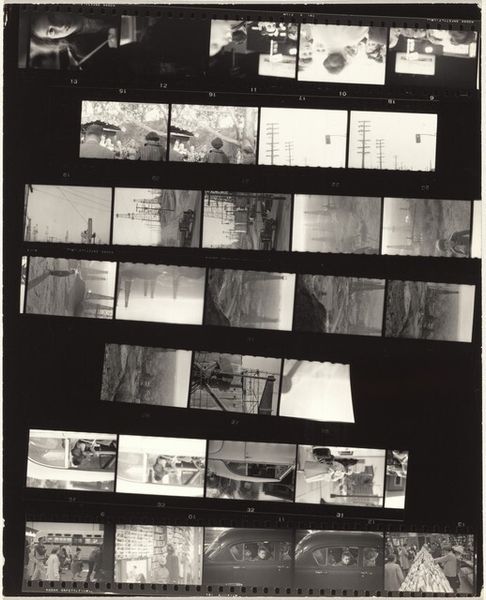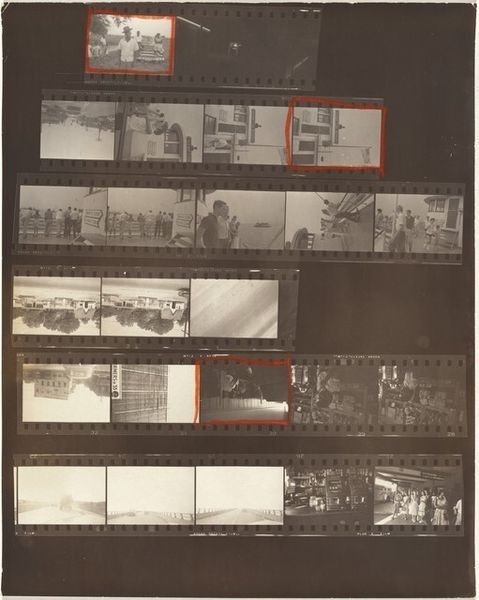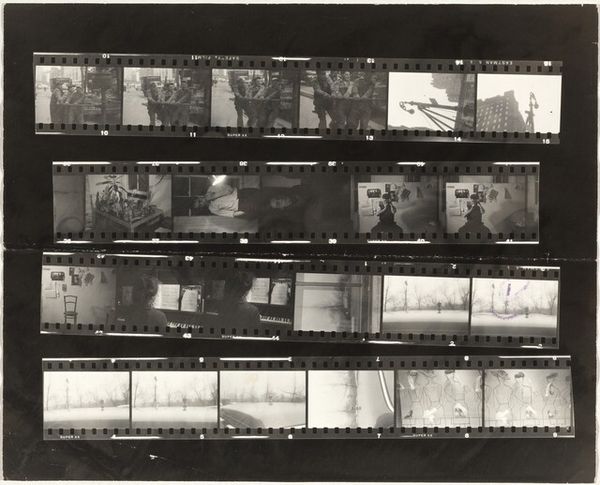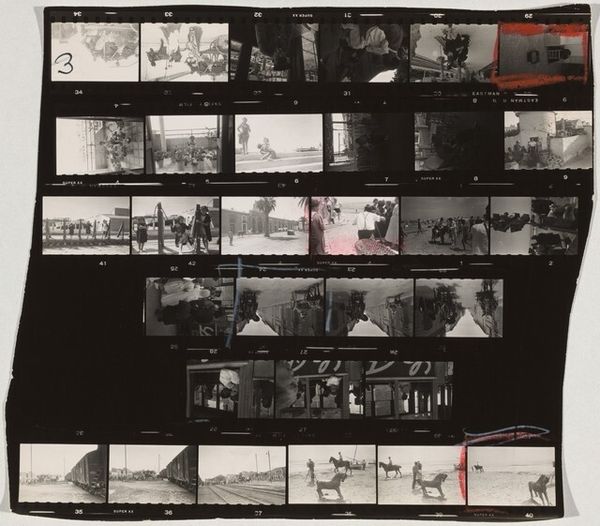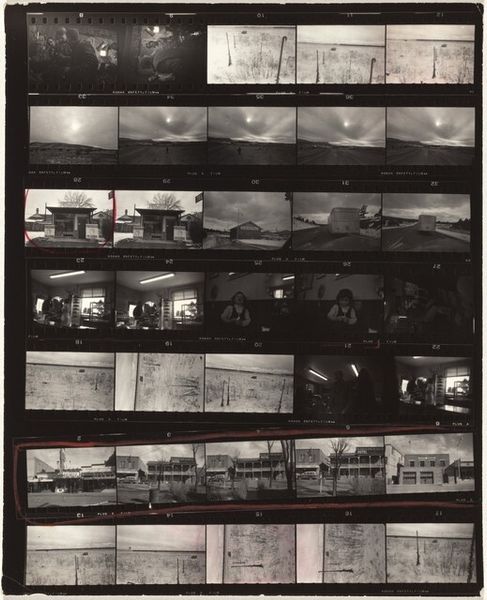
contact-print, photography
#
landscape
#
contact-print
#
street-photography
#
photography
#
cityscape
#
modernism
Dimensions: overall: 20.2 x 25.2 cm (7 15/16 x 9 15/16 in.)
Copyright: National Gallery of Art: CC0 1.0
Editor: This is "Paris 82B," a contact print photograph by Robert Frank, created between 1951 and 1952. The overall impression I get is fragmented – strips of images, some marked with what looks like crayon. What symbols or deeper meanings do you find embedded here? Curator: Look closely. Frank’s contact sheets transcend simple documentation; they’re symbolic palimpsests. The crayon markings, those azure loops and the deliberate yellow highlighting, are not mere edits. Consider the highlighted frames: isolated moments chosen, invested with a particular weight. Why those? Editor: So, you think the markings aren't random? Is there a key to decipher them? Curator: Think about what street photography, especially post-war, represented: a search for authenticity, a grappling with modernity. These aren't pristine, idealized views of Paris. Frank gives us something rawer. The lines and scribbles create a visual hierarchy, a deliberate guide to interpreting his vision of a changing Paris. Editor: I see. So the symbols aren't necessarily overt, like a religious icon, but more about emphasizing certain themes. The city evolving, maybe? Curator: Precisely! Note the recurring motifs: lone trees, the skeletal scaffolding, glimpses of everyday life caught mid-frame. The '82B' itself feels like a code, part of a visual language. And a city that never stops to keep being renovated and renewed. This gives even more emphasis to Frank´s pursue to fix an ethereal moment in such ever-changing environment. What’s left in our memory from all of that? Editor: That makes me appreciate how much thought goes into selecting and marking the frames, like each chosen image is a carefully chosen word in a poem. Curator: Exactly. It shows the lasting power of images to carry memory, to encapsulate a mood and moment, to hint at broader truths through their carefully constructed symbolism.
Comments
No comments
Be the first to comment and join the conversation on the ultimate creative platform.

